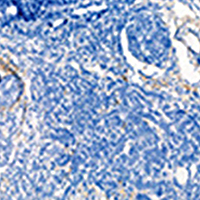Aberrant expression of CCDC69 in breast cancer and its clinicopathologic significance

Submitted: 10 December 2020
Accepted: 27 January 2021
Published: 22 February 2021
Accepted: 27 January 2021
Abstract Views: 1010
PDF: 663
HTML: 24
HTML: 24
Publisher's note
All claims expressed in this article are solely those of the authors and do not necessarily represent those of their affiliated organizations, or those of the publisher, the editors and the reviewers. Any product that may be evaluated in this article or claim that may be made by its manufacturer is not guaranteed or endorsed by the publisher.
All claims expressed in this article are solely those of the authors and do not necessarily represent those of their affiliated organizations, or those of the publisher, the editors and the reviewers. Any product that may be evaluated in this article or claim that may be made by its manufacturer is not guaranteed or endorsed by the publisher.
Similar Articles
- M.L. Escobar Sánchez, O.M. EcheverrÃa MartÃnez, G.H. Vázquez-Nin, Immunohistochemical and ultrastructural visualization of different routes of oocyte elimination in adult rats , European Journal of Histochemistry: Vol. 56 No. 2 (2012)
- Stanislav Ziaran, Stefan Harsanyi, Katarina Bevizova, Zuzana Varchulova Novakova, Branislav Trebaticky, Peter Bujdak, Stefan Galbavy, Lubos Danisovic, Expression of E-cadherin, Ki-67, and p53 in urinary bladder cancer in relation to progression, survival, and recurrence , European Journal of Histochemistry: Vol. 64 No. 2 (2020)
- Huyi Liu, Xiangdao Cai , Jia Liu, Fengxiang Zhang , Andong He, Ruiman Li, The lncRNA MEG3 promotes trophoblastic cell growth and invasiveness in preeclampsia by acting as a sponge for miR-21, which regulates BMPR2 levels , European Journal of Histochemistry: Vol. 65 No. 4 (2021)
- Antonella Vetuschi, Alfredo Cappariello, Paolo Onori, Eugenio Gaudio, Giovanni Latella, Simona Pompili, Roberta Sferra, Ferroptosis resistance cooperates with cellular senescence in the overt stage of nonalcoholic fatty liver disease/nonalcoholic steatohepatitis , European Journal of Histochemistry: Vol. 66 No. 3 (2022)
- Yan Long, Yan Zhao, Xiaoqing Ma, Ya Zeng, Tian Hu, Weijie Wu, Chongtian Deng, Jinyue Hu, Yueming Shen, Endoplasmic reticulum stress contributed to inflammatory bowel disease by activating p38 MAPK pathway , European Journal of Histochemistry: Vol. 66 No. 2 (2022)
- Daša Zupančič, Rok Romih, Immunohistochemistry as a paramount tool in research of normal urothelium, bladder cancer and bladder pain syndrome , European Journal of Histochemistry: Vol. 65 No. 2 (2021)
- Flavia Carton, The contribution of immunohistochemistry to the development of hydrogels for skin repair and regeneration , European Journal of Histochemistry: Vol. 67 No. 1 (2023)
- Guangbao He, Yibo He, Hongwei Ni, Kai Wang, Yijun Zhu, Yang Bao, Dexmedetomidine attenuates neuroinflammation and microglia activation in LPS-stimulated BV2 microglia cells through targeting circ-Shank3/miR-140-3p/TLR4 axis , European Journal of Histochemistry: Vol. 67 No. 3 (2023)
- T. A. Osman, G. Øijordsbakken, D. E. Costea, A. C. Johannessen, Successful triple immunoenzymatic method employing primary antibodies from same species and same immunoglobulin subclass , European Journal of Histochemistry: Vol. 57 No. 3 (2013)
- Liqin Xi, Chen Wang, Pengyu Chen, Qi Yang, Ruiqi Hu, Haolin Zhang, Qiang Weng, Meiyu Xu, Expressions of IL-6, TNF-α and NF-κB in the skin of Chinese brown frog (Rana dybowskii) , European Journal of Histochemistry: Vol. 61 No. 4 (2017)
<< < 17 18 19 20 21 22 23 24 25 26 > >>
You may also start an advanced similarity search for this article.

 https://doi.org/10.4081/ejh.2021.3207
https://doi.org/10.4081/ejh.2021.3207










